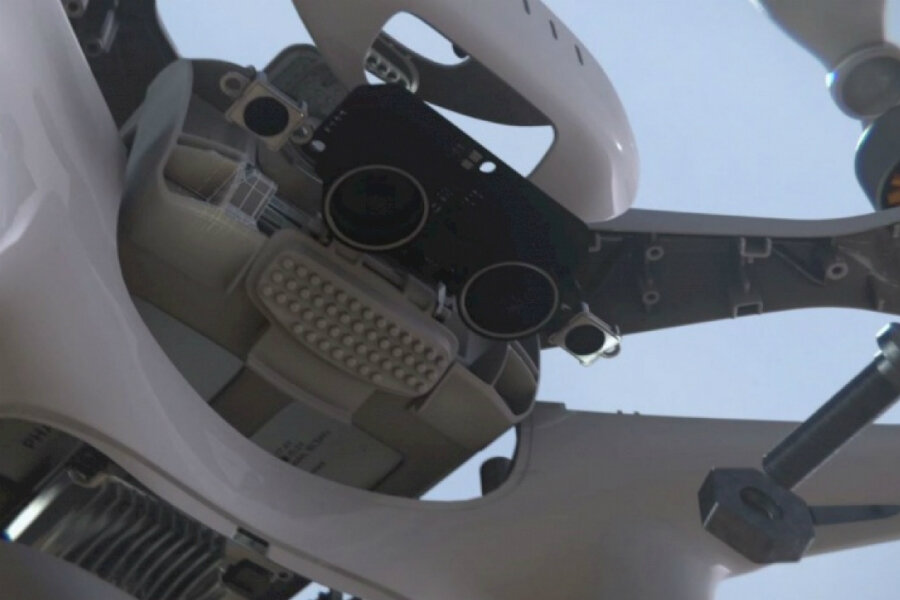Why Intel bought 'eyes' for its drones
Loading...
Talk about having eyes in the sky.
On Monday, Intel announced that it will purchase Movidius, an Irish company that develops computer vision processors. With newly acquired chips and deep learning algorithms, Intel will be able to imbue its RealSense cameras with independent, low-power image processing.
In simpler terms, the company could build drones and other devices that can “see” on their own – no human required. Could such an omniscient gadget change the already-fluid public perception of drone technology?
At the most basic level, the biological eye is used to gather information and make decisions. Using camera “eyes,” computers can also extract complex understanding from visual data. Such cogent devices are able to restore images, to avoid obstacles, and to track moving objects. Computer vision refers to the digital pathways which make these tasks possible.
For the past decade, Movidius has supplied computer vision processors to a slew of different tech manufacturers. In January, the company began collaborating with Google to produce deep learning mobile devices. Two months later, it developed a visual guidance system that supported near-autonomous flight for DJI’s Phantom 4 drone, which can track a moving object on its own.
New regulations from the Federal Aviation Administration promised to change the way businesses approached drone technology. Now, just one week after those regulations went into effect, Intel has snapped up Movidius for a presently undisclosed price – a move which may reflect a larger shift in thought about drone technology.
Some are optimistic about the future of drones: uncrewed flying devices could soon be used to deliver packages, to provide internet to remote areas, and even to save the whales. Drones have also proven a popular toy for aerial hobbyists and techy kids. Others decry the technology’s more destructive capacity, citing its applications in warfare and covert cyberattacks.
“For people in my industry these things are just showing up and nobody quite knows how to deal with them,” Jeff Melrose, a cybersecurity strategist for Yokogawa US, told The Christian Science Monitor in August.
With so many possibilities in this still-new world of drones, the public is split between excitement and dismay. Consumers may wonder: Is Intel trying to build Big Brother's newest tool, or simply upgrade a backyard toy?
With so few available details, it’s hard to say. But some say the sale represents a shift into the “Internet of Things.” Just as the internet brings people and information together, the so-called IoT connects physical things. IoT devices are the infrastructure of digital connectivity – smart thermometers linked to smart homes which are themselves linked to smart watches.
“Intel’s purchase reflects a growing recognition that drones are really IoT devices, armed with sensors and communication technologies,” Gregory McNeal, White House-recognized drone expert and law professor at Pepperdine University in California, tells the Monitor in an email. “The true power of these IoT devices won’t be fully revealed until they become connected to cloud based infrastructure that can enhance their performance and safety.”
Either way, it’s pretty clear that drones are an important new venture for Intel – Brian Krzanich, the company’s chief executive officer, serves as chairman of the RTCA Drone Advisory Committee which will advise the FAA in developing drone regulations.








